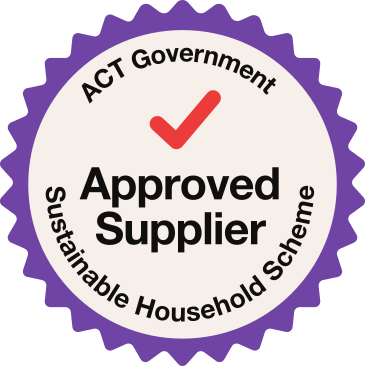Solar Battery Rebate NSW: Everything You Need to Know
Introduction
The solar battery rebate in New South Wales (NSW) is a game-changer for homeowners looking to reduce energy bills and adopt sustainable power solutions. With rising electricity costs and a push towards renewable energy, the NSW government has introduced incentives to encourage solar battery adoption. This guide provides an in-depth look at the rebate, eligibility criteria, benefits, and how you can take advantage of it.
What is the Solar Battery Rebate NSW?
The solar battery rebate NSW is an incentive offered by the state government to reduce the cost of installing solar battery storage systems. This initiative aims to support homeowners in storing excess solar energy, reducing reliance on the grid, and lowering electricity bills.
Key Benefits:
- Lower upfront costs for solar battery systems
- Increased energy independence
- Reduced electricity bills
- Contribution to a greener environment
Why NSW is Offering a Solar Battery Rebate
The NSW government aims to transition towards net-zero emissions by 2050. By encouraging solar battery adoption, they seek to:
- Reduce peak energy demand on the grid
- Lower carbon emissions
- Enhance energy security for residents
- Create jobs in the renewable energy sector
How Much Can You Save with the Solar Battery Rebate?
The rebate amount varies based on eligibility and the system installed. On average:
- Homeowners can save up to $2,400 on a battery system
- Additional savings come from reduced electricity bills
- Households can potentially earn from Virtual Power Plants (VPPs)
Eligibility Criteria for the Solar Battery Rebate in NSW
To qualify for the solar battery rebate NSW, homeowners must meet specific criteria:
- Be a NSW resident
- Own and live in the property
- Have an existing solar panel system or plan to install one
- Meet income requirements (varies by program)
- Install an approved battery model
How to Apply for the Solar Battery Rebate
Follow these steps to apply:
- Check eligibility on the NSW government website
- Choose an accredited installer
- Get a quote for the battery system
- Submit an application for the rebate
- Install the battery after approval
- Claim the rebate once installation is verified
Best Solar Batteries Eligible for the Rebate
Not all batteries qualify for the rebate. Some top-rated options include:
- Tesla Powerwall 2
- LG Chem RESU
- Sonnen Eco
- Alpha ESS
- Redback Smart Hybrid
Solar Battery Costs After the Rebate
Solar battery costs vary based on capacity and brand. Here's an estimated breakdown before and after rebate:
| Battery Size | Average Cost (Before Rebate) | Cost After Rebate |
|---|---|---|
| 5 kWh | $5,500 - $7,500 | $3,500 - $5,100 |
| 10 kWh | $8,000 - $12,000 | $5,600 - $9,600 |
| 13.5 kWh | $11,000 - $15,000 | $8,600 - $12,600 |
Technical Details of Solar Batteries
Solar battery technology has advanced significantly, with modern systems offering greater efficiency and lifespan. Key technical aspects include:
Battery Types:
Lithium-ion Batteries (e.g., Tesla Powerwall, LG Chem)
High energy density
Long lifespan (~10-15 years)
Faster charging times
Lead-Acid Batteries
Lower upfront cost
Shorter lifespan (~5-7 years)
Slower charging cycle
Flow Batteries
Longer lifespan (~20 years)
Scalable energy storage
Higher initial investment
Capacity & Power Output
Capacity (kWh): Determines how much energy can be stored.
Power Output (kW): Dictates how much energy can be used at once.
Depth of Discharge (DoD): Higher DoD means more usable energy.
Round-Trip Efficiency: Measures how much energy is retained after charging/discharging.
Cost Analysis: Solar Battery vs. Grid Electricity
Comparing Solar Battery Costs vs. Grid Dependence
Solar battery system (10 kWh):
Upfront cost: ~$10,000
Lifetime savings: ~$15,000-$20,000
Payback period: 5-8 years
Grid electricity (without battery):
Annual cost: ~$2,000-$3,000
Increasing energy rates impact long-term costs
Key Takeaways:
Batteries offer long-term savings despite high upfront costs.
Grid reliance leads to higher expenses over time.
Combining solar panels with batteries maximizes benefits.
How Solar Battery Rebates Work with Virtual Power Plants (VPPs)
VPPs allow households to sell stored energy back to the grid, creating an additional income stream. Some benefits include:
- Extra financial incentives
- Greater energy independence
- Contribution to grid stability
Popular VPP providers in NSW include:
- Tesla Energy Plan
- AGL Virtual Power Plant
- Redback Technologies VPP
How the Rebate Compares to Other States
NSW isn't the only state offering rebates. Here’s a comparison:
| State | Maximum Rebate | Additional Incentives |
|---|---|---|
| NSW | $2,400 | VPP incentives |
| Victoria | $3,500 | No-interest loans |
| South Australia | $3,000 | Additional subsidies |
Pros and Cons of Installing a Solar Battery
Pros:
✔ Lower electricity bills
✔ Greater energy independence
✔ Reduce carbon footprint
✔ Access additional rebates
Cons:
✘ High initial investment
✘ Batteries degrade over time
✘ Not all homes are eligible
Frequently Asked Questions (FAQs)
1. Is the solar battery rebate NSW still available in 2025?
Yes, but funding is limited, so applying early is recommended.
2. Can I get the rebate if I install a battery without solar panels?
No, the rebate applies only to homes with existing or new solar panel systems.
3. How long does a solar battery last?
Most batteries have a lifespan of 10-15 years with warranties covering around 10 years.
4. Can businesses apply for the rebate?
No, the current rebate program is for residential properties only.
5. What happens if the rebate program ends?
You may still qualify for other solar incentives or government grants.
Conclusion
The solar battery rebate NSW is a fantastic opportunity for homeowners to reduce electricity costs, increase energy independence, and support sustainable energy. With government incentives and evolving energy technologies, now is the perfect time to invest in solar battery storage.
Take action today! Check your eligibility and apply for the rebate to start saving on energy bills while contributing to a greener future.



